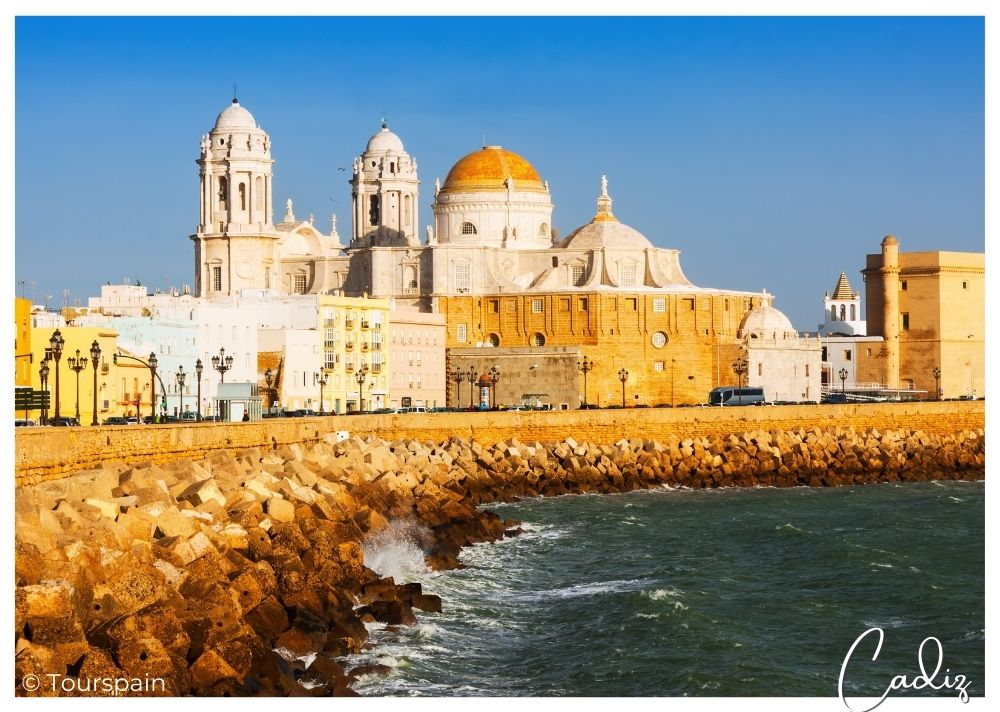
There’s so much more to Spain than the obvious. Isabella Noble takes us on a tour of its hidden riches, from the culture and nature to the art and food.
This is a feature from Issue 15 of Charitable Traveller.
A blissfully quiet, sand-dusted cove where the Mediterranean ripples under a flaming sunset. A well-worn tapas bar overlooking a centuries-old church on a buzzy village plaza. A spine-tingling walking trail set against a silent backdrop of snow-dusted peaks. Welcome to Spain – the lesser-known side.
Since tourism kicked off back in the mid-20th century, Spain has grown into one of the world’s most-loved destinations, and in 2022 welcomed around 70 million visitors. But beyond the beachy hotspots, the busy headliner cities and the book-ahead famous galleries, vast pockets of the country remain little-explored by foreign travellers. Simply visiting outside the peak summer months of July and August can completely transform a destination, while diving into an underrated region can throw a whole new light on Spain’s endlessly varied beauty. With a raft of new rail routes launched in recent years, ever- improving train links mean it is now easier than ever to step into Spain’s lesser-known corners while keeping your environmental impact low, too; the journey itself is half the fun, watching the changing landscapes roll by as you zip along at a slower pace.
From remote hidden valleys and far-flung beaches to on-the-up wine regions and curiously underrated cities, here’s a taste of where to venture beyond the crowds on a Spanish adventure.
Picos de Europa Mountains
©Tourspain
Foodie Flavours
Expertly sliced jamón, salty Padrón peppers, the perfect tortilla de patatas – there’s a reason why Spanish cuisine is adored all over the world. The secret is that cooking here has always been rooted in fresh, seasonal, on-the-doorstep ingredients, from pungent cave-aged cheeses in Asturias to just-grilled seafood along Andalucía’s sunny shores. Big-hitter foodie cities like Madrid, Barcelona and San Sebastián might steal the gastronomic spotlight, but every pocket of the country has its own irresistible specialities, age-old culinary traditions and distinctly local flavours.
Take León, for example, a dynamic northwest city with a simmering old-town tapas scene that draws in-the-know Spaniards with its rich regional flavours, such as Valdeón cheese and salted cecina (a cured beef). Or the Basque Country’s powerhouse Bilbao, whose always-buzzy pintxo bars (many of them family-owned for generations) are some of Spain’s finest spots to eat, both in the cobbled Casco Viejo and beyond.
Further west along the dramatic north coast, the wild Picos de Europa mountains (a national park since 1918) conjure the ideal conditions for producing prize-winning blue cheeses matured in mist-shrouded caves in Cantabria and Asturias. Drop by for a tour and tasting with a local quesero (cheesemaker), or visit in late August for the Feria del Cabrales, which celebrates one of the world’s finest blue cheeses.



Down south, as any food-loving Spaniard will tell you, the Cádiz area of Andalucía unveils one of Spain’s most thrilling food scenes, fuelled by fresh ingredients from the Atlantic Ocean, the rugged Grazalema mountains and the fabled Sherry Triangle around Jerez de la Frontera. A tortillita de camarones (shrimp fritter) or a tapa of local payoyo cheese, paired with a glass of crisp dry sherry, ranks among Andalucía’s most unforgettable flavours. In 2022, Ángel León’s three-Michelin-star Aponiente, in the sherry-making town of El Puerto de Santa María, bagged a Michelin Green Star for its sustainability-driven cookery (one of 39 restaurants in Spain to receive this new award).
Then there’s the tantalising world of Spanish arroces (rice dishes). While paella has become synonymous with Spain’s gastronomy, it’s just one of countless divine arroces you’ll come across. For a classic paella in all its traditional, season-fired glory, head to rice-growing La Albufera in Valencia, paella’s fabled birthplace.
Cáceres
©Tourspain
Arts and culture
Over the last few years, the buzzing city of Cáceres in Extremadura has been quietly making a name for itself as a lively cultural hub, thanks to its splendid UNESCO- protected Ciudad Monumental (old town) and the 2021 arrival of the respected Museo Helga de Alvear (devoted to contemporary European art). Beyond the city itself, the whole of Extremadura is an uncrowded joy. Here, among the sprawling meadows and cork forests, jamón-production has been elevated into one of the nation’s most prized art forms; dive in anywhere, but especially in celebrated Monesterio. And don’t miss the little-visited Parque Nacional de Monfragüe, just northeast of Cáceres, for some of the best birdwatching in Spain (including rare black vultures).
Or how about elegant Zaragoza? Aragón’s capital was once the playground of the unrivalled artist Francisco de Goya, whose footsteps you can follow all over the city (there’s a major dedicated museum) and on to his 1746 birthplace in Fuendetodos. There’s also the mesmerising, Alhambra-echoing Aljafería (Spain’s greatest Moorish monument outside Andalucía), not to mention the dazzling baroque Basílica de Nuestra Señora del Pilar and one of the nation’s most drool-worthy tapas trails. Throw in a sidetrip to the majestic Parque Nacional de Ordesa y Monte Perdido for outstanding hiking.
And while Andalucía’s great cities – Granada, Seville, Córdoba – pull in countless visitors each year, few travellers make it to the underrated twin towns of Úbeda and Baeza in Jaén province. Both towns host a string of spectacular, UNESCO-listed Renaissance buildings, some recently reborn as tempting hotels. This landlocked region also happens to produce some of the world’s finest olive oil, which you can learn all about on an owner-led olive-mill tour. There’s more olive-oil heritage to uncover nearby in the off-the-beaten-track Sierras Subbéticas, between Córdoba and Granada, where a clutch of charming, sustainability-driven hotels make the perfect base for hikes between ancient pueblos blancos (white villages).
Santiago de Compostela
©Tourspain
City Thrills
For some of Spain’s most exciting yet undertouristed urban hubs, head to the wonderfully green northwest. Galicia’s capital Santiago de Compostela might be well-loved as the final stop on the Camino de Santiago, but it’s also a thriving modern city with a fired-up food scene, as a quick spin around the always-festive Mercado de Abastos shows. Atlantic-side A Coruña, meanwhile, rewards visitors with superb seafood, a cliff-edged coastline and a deliciously unspoilt historic centre; for 2023, the city is stepping into the spotlight with a line-up of fresh exhibitions and events for the international Picasso Year (the great Málaga- born artist Pablo Picasso lived here as a teenager). Also worthy of exploration on any Galician adventure is lively Pontevedra, with its plaza-filled old town and the fabulous albariño wineries of the Rías Baixas right on the doorstep.
Or seek out Oviedo, the graceful Asturian capital, known for its entirely unique pre-Romanesque architecture; this year sees the arrival of brand-new high-speed AVE trains to and from Madrid. The remote Parque Natural de Somiedo, an untouched mountain wonderland just southwest of Oviedo, makes the ideal add-on; head out hiking around high-altitude lakes and sweeping green-clad valleys, and you might just spot a rare brown bear.
Menorca
©Tourspain
Bountiful Beaches
While the most popular sweeps of sand do get busy, there are plenty of lesser-known pockets where you can find your own patch of beachy bliss. Often, all it takes is exploring outside peak season (July/August) or venturing a little beyond the crowds – perhaps hiking or kayaking to a hidden cala (cove).
Over in the bewitching Balearics, jewel-like Menorca makes an irresistibly slow-going island escape and a quieter beach alternative to its busy neighbours Ibiza and Mallorca. The beautifully contrasting pine-fringed coasts are defined by silken white coves in the south and rugged red-sand strands in the north, and you can stay at chicly reimagined farmhouses or thoughtfully converted historical mansions. In efforts to protect the island’s natural spaces, many beaches have been kept free of road access, and most are now linked by the recently restored Camí de Cavalls walking, cycling and horse-riding trail.
Strung along Andalucía’s southeast coast, Cabo de Gata is another uncrowded delight and a protected parque natural (natural park). Pair its pristine coves, sleepy whitewashed villages and dramatic desert-like landscapes with a stop in Almería city, known for its formidable Moorish Alcazaba, palm-dotted historic centre and unstoppable tapas scene.
Elsewhere, Spaniards love the wild, cliff-edged northern coastline that ripples all the way from the Basque Country to Galicia, but somehow remains largely off-radar among foreign travellers. This is a laid-back, surf-loving shoreline, where the deep-blue Bay of Biscay washes on to golden-white strands tucked at the foot of sheer sea cliffs. Perhaps most heavenly of all are Galicia’s Illas Cíes, a paradise of Caribbean-feel beaches and Atlantic-view walking trails protected by the Parque Nacional das Illas Atlánticas (you’ll need to book permits and boat tickets ahead).
Even in the distant Canary Islands (one of Spain’s most popular holiday playgrounds), there are plenty of secluded sands worth seeking out. You could start with dreamy La Graciosa, a tiny, isolated island reached only by ferry from Lanzarote. And all over the Canaries, twinkling volcanic sea pools are a speciality, too – particularly on the remote, undertouristed island of El Hierro, declared a protected UNESCO Geopark in 2014.
Parador De Granada
©Tourspain
Magical Places to stay
What better way to dive into Spain’s long, multi-layered history than by spending a night (or several) at a medieval monastery, a fairytale castle or a 500-year-old hotel? Across the country, from grand urban plazas to hidden-away mountain valleys, the unique state-owned Paradores hotels are set within sensitively converted historical buildings, where you’ll be sipping your morning café con leche under original-stone arches, slumbering in evocatively designed rooms that tell their own stories, and dining in wonderful, smart restaurants showcasing typical regional dishes.
At the Parador de Granada, for example, you’ll wake up in a 15th-century convent within the grounds of one of Spain’s most enchanting monuments, the Alhambra. In remote northwest Extremadura, the Parador de Jarandilla (a peaceful 15th-century castle) puts the little- touristed, paprika-producing La Vera valley on the map. And just outside the Andalucian capital Seville, the Parador de Carmona throws open the door to the history- crammed town of Carmona with stays in a reincarnated 13th-century alcázar (fortress).
Wine routes
There’s a whole lot more to the tantalising, boundary-pushing world of Spanish wines than famous Rioja and Ribera del Duero, and hunting down a few intriguing wineries can be the perfect excuse to delve into a lesser-known region – whether you fancy a tapas-and-wine tasting session, a leisurely cycling excursion through vineyards or a stay in a stylish architect-designed bodega-hotel.
Wine has been made in Spain since Phoenician times, and the richly varied grape offerings (some of which have only recently been recovered) mean there are now over 70 Denominación de Origen (DO; Denomination of Origin) regions sprinkled across the country. Seek out, for example, the up-and-coming Ribeira Sacra wine region in Galicia; the less-famous sherry-like wines of Córdoba’s Montilla-Moriles DO; the off-the- beaten-track Sierra de Francia vineyards near Salamanca; or the delectably rich volcanic wines of the Canary Islands. Time your visit for August or September and you’ll inevitably stumble across a raft of riotous wine-harvest festivals too.

Feeling inspired? Experience beautiful Spain for yourself by booking your next adventure today! Take a look at our latest offers below or get in touch with our charity experts to book your dream trip.
This is a feature from Issue 15 of Charitable Traveller.

















 by net effect
by net effect